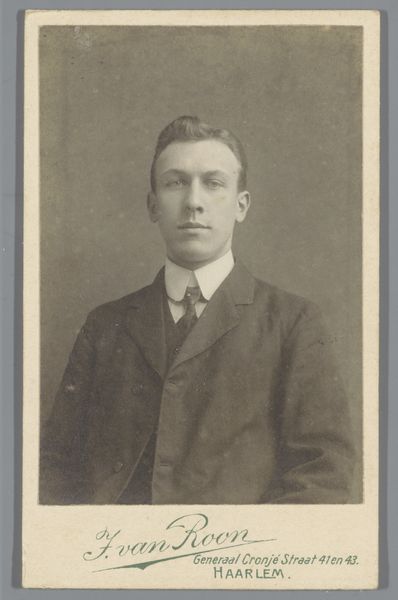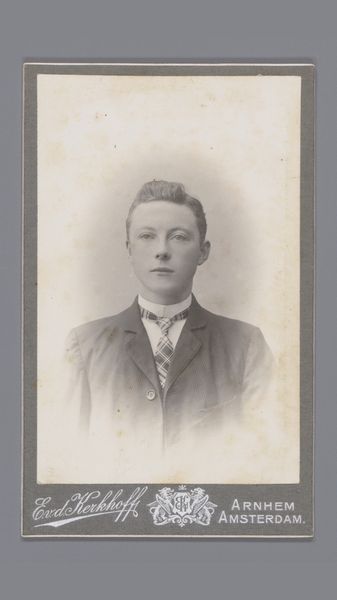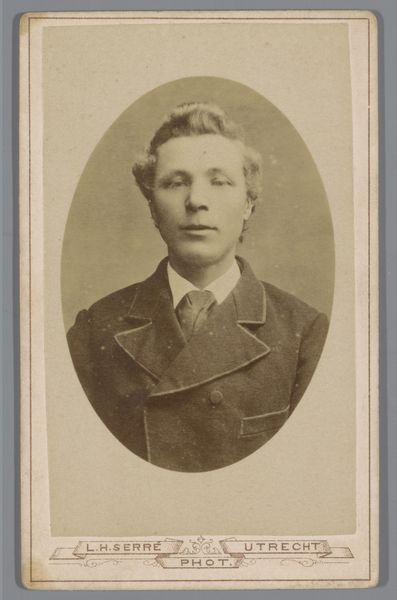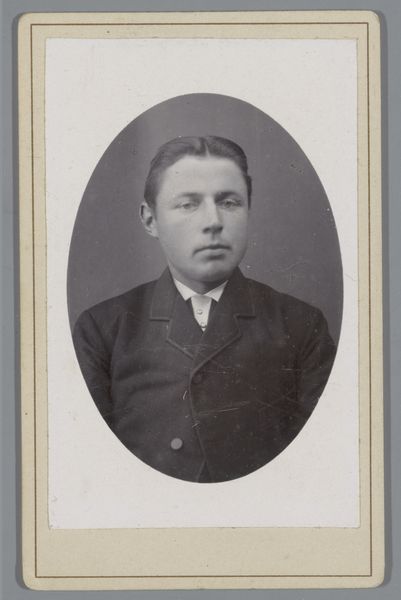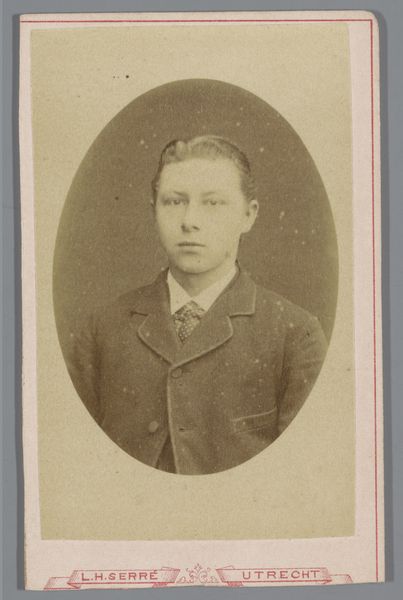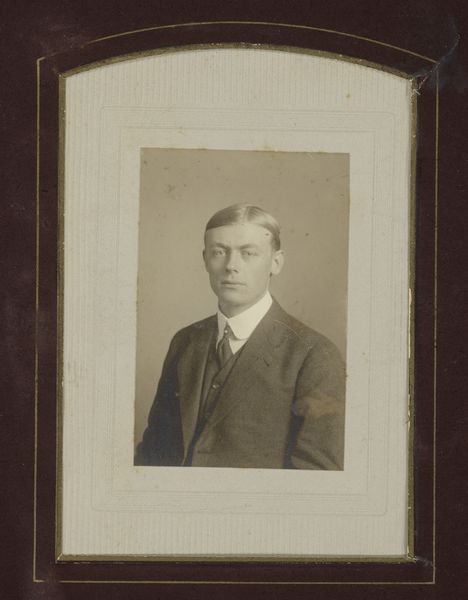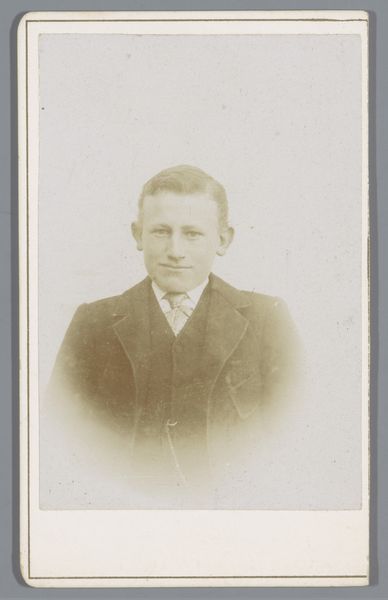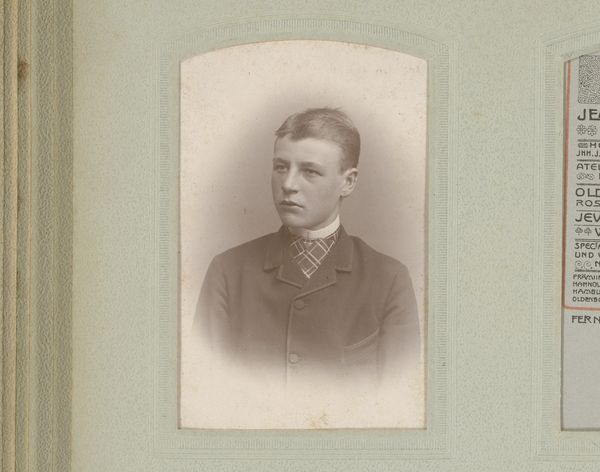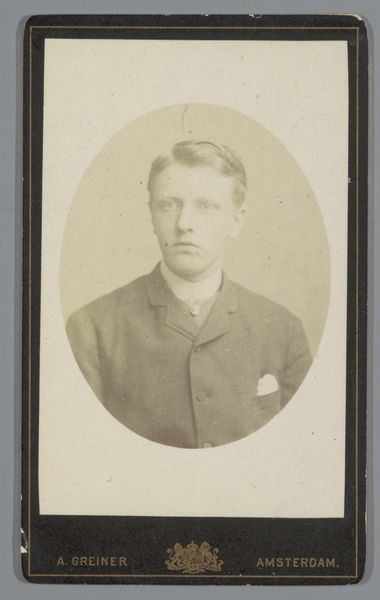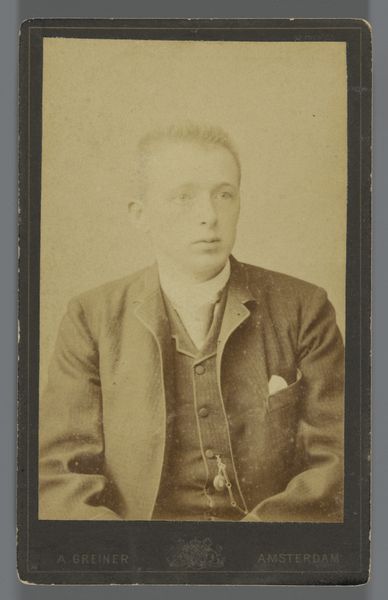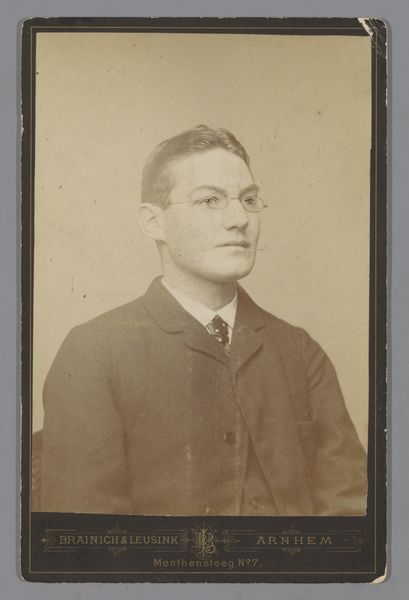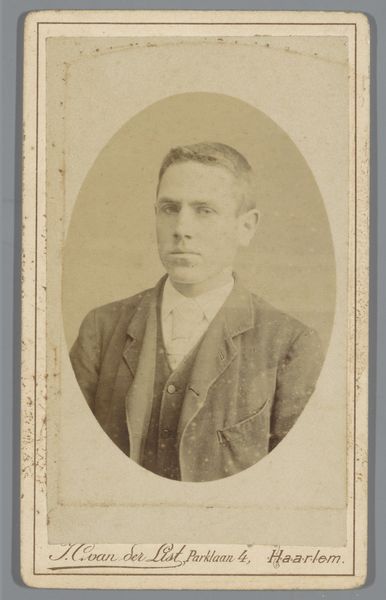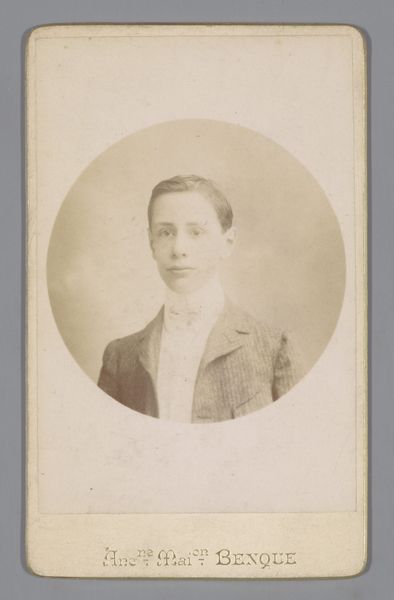
photography
#
portrait
#
vintage
#
photography
#
historical fashion
#
realism
Dimensions: height 87 mm, width 56 mm
Copyright: Rijks Museum: Open Domain
Curator: Let’s take a look at this portrait. It is simply called "Portret van een onbekende man," or "Portrait of an Unknown Man," and dates from around 1910 to 1920. The piece is a photograph credited to P. Steensma. Editor: There’s something incredibly austere about this image, almost haunting in its simplicity. The subject's gaze is direct, but he doesn't seem to offer anything of himself. The gray scale amplifies this feeling. Curator: Right, the materiality speaks to its time. This photograph would have been a significant production, involving specific chemical processes, paper types, and printing methods available in Amsterdam. The sharp collar and somber double-breasted coat – certainly marks him as bourgeois, conforming to sartorial codes indicative of a specific economic bracket. These weren't inexpensive clothes. Editor: Indeed. His formal attire isn’t just clothing; it symbolizes societal expectation and perhaps aspiration. The high collar, the carefully knotted tie—it speaks of rigidity, tradition. What narratives of identity and status are presented here? The photographer, P. Steensma, becomes something of a mythmaker himself. Curator: Exactly, it also touches upon a rising merchant class in Amsterdam at the time, which changed manufacturing, labour and distribution and made consumer items such as tailored suits far more available, indicating the development of an industrial culture. You start to consider what labor and craft goes into making these kind of clothes, these photographs, and the ways of viewing it during its specific period. Editor: The photograph itself, being mass produced in a studio to certain visual patterns becomes, itself, a form of symbol and repetition. It presents an aspiration or expectation of respectability. The fact he is "unknown" further contributes to it, as his specific, individual symbolism becomes, therefore, universally relatable in representing this period of early 20th century society. Curator: Fascinating! By observing its materials, production, and fashion choices, it uncovers its socioeconomic circumstances, and cultural patterns. Editor: It’s left me reflecting on the silent stories contained within each image, both of the subject, the photographer, and us, the viewers today, decades on.
Comments
No comments
Be the first to comment and join the conversation on the ultimate creative platform.
